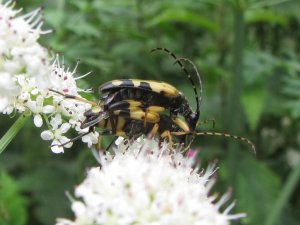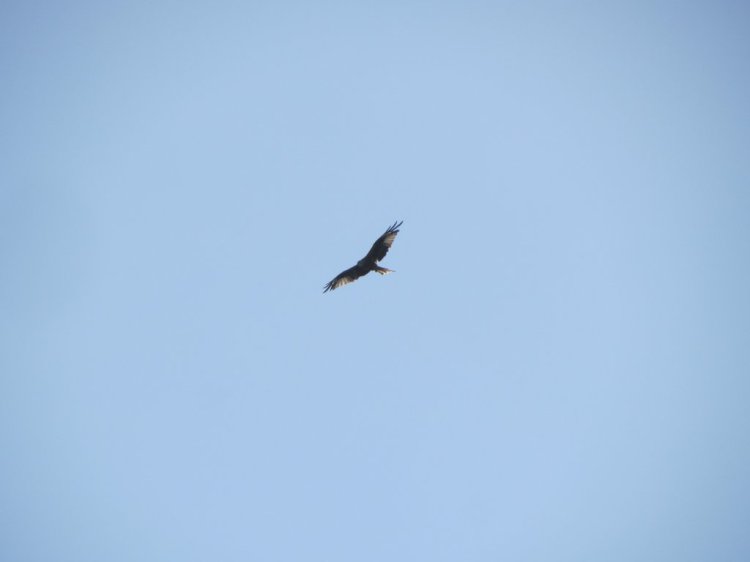I’m not sure when this happened, but I’ve become an invertebrate activist. Attending the fifth annual New Networks for Nature event last week, I found myself keeping eyes and ears alert for all things spineless. I must say, it took a while before I was satisfied. With apologies to Hattie Ellis, whose presentation on the contribution of honey and bees to human culture was really quite interesting, honeybees don’t count. Everybody likes bees nowadays, don’t they? So I was delighted when Brett Westwood began his contribution to the ‘What Does It Mean To Be A Naturalist?’ session by putting up a photograph of a slug, sat on top of a mushroom. Now that was more like it! A lemon slug at that. Not a creature I’d ever heard of before, but I think it’s fair to say that lemon slugs were one of the surprise hits of the weekend.
Slight dominance by things with backbones is the only gripe I can make about what was a thoughtfully put together and very well run event. And it isn’t so much a gripe as an inevitability – people talk about what interests them and more people are more interested in vertebrates, if that makes sense. I started down the nature-loving road with birds, after all. Next year’s event promises to redress the balance somewhat with a focus on scale – from landscapes through insects down to microscopic organisms. I hope I can make it.
So what exactly is ‘New Networks for Nature’? I’m still not exactly sure, except that I like it. It’s a sort of workshop for ideas but not quite a conference, and an arts event that isn’t quite a festival. It is not really – but kind of is – a symposium, but might better be described as an annual general meeting for a movement of like-minded folk. Only ten times more entertaining than your average AGM. The best way I can describe it is to say that it is a fairly unique gathering of scientists, writers, artists, politicians and activists, joined together by a common interest in how we relate to the natural world.
This year’s contributors were a diverse group who put forth a similarly diverse set of views on the interface between nature and human culture, although so much common ground seemed to exist amongst the panellists that Stephen Moss (who with Rob Lambert organised and chaired this year’s event) felt moved to call for more disagreement at the beginning of the second day! And I can see why that’s important, especially when you consider the (I thought) very reasonable point made by all three speakers on the ‘alien’ species panel: all conservation decisions necessarily contain an element of subjectivity. It would be surprising, perhaps even troubling if everybody agreed all of the time.
As a recent-ish graduate of a conservation MSc (and now teaching assistant on the same course) and also as someone who follows wildlife-related news very closely, I’ve perhaps heard one or two of the day’s big issues debated one too many times before, from badgers to neonicotinoids to biodiversity offsetting. So aside from Westwood’s winningly simple ‘get-out-there-and-get-stuck-in’ (to lemon slugging!) approach to natural history I found, somewhat to my surprise, that it was often the artistic preludes, interludes and epilogues that resonated most strongly for me.
Novelist Melissa Harrison apparently approached Mark Cocker for advice on writing about nature whilst she was crafting her debut novel, Clay, but judging by the excerpt she read to us, nature writers will be going to her for help in the future. She perfectly evoked the sensation of exploring a lost, overgrown garden with no company apart from the birds, worms, and hoverflies that make it their home.
Saturday morning’s haiku session was similarly spellbinding. The beauty of such short, carefully crafted poems is as much in what they don’t say as in what they do. The reader – or listener – is invited to draw on their own recollections of the subject, weaving together a mental picture that combines memory and new insight in a beautiful way.
The Friday morning began with a collection of folk songs about birds, one for each constituent country of the British Isles, ably sung for us by Jonathan Elphick. As somebody who fits the apparently outmoded beard, anorak and ale stereotype of the birdwatcher, folk music was, for me, something of a treat.
It was certainly a thought-provoking and at times inspiring couple of days. But one thing was lacking – actual encounters with wildlife out in the real world! We cast our eyes over a map and picked out an RSPB reserve that looked conveniently en-route for the way home, the Nene Washes. It’s a fenland reserve that in effect forms an island of good habitat, at sea in homogenous, mud-ringed cropland studded with warehouses and chip factories. Not that scenic, but fortunately birds don’t have the same aesthetic sensibilities as I. A so far very successful reintroduction of the corncrake to England is based on the Nene Washes, and in winter the floods are reputed to teem with wildfowl.
Alas, we found the fields a little dry and our stop initially disappointed. Having spent two days nodding along to speaker after speaker declaring how wonderful nature was, it was discouraging. It didn’t help that, despite arriving well over an hour before sunset, we found ourselves struggling with dim, grey light from the outset. Every bird we saw was distant or only with us for a fleeting moment. The nearest fields were dry and relatively clear of the promised ducks, geese and wild migrant swans (both Bewick’s and Whooper). No short-eared or barn owls showed themselves as I had hoped. Eventually we turned back for the car, glad of the exercise but distinctly underwhelmed, our experience of the Nene Washes as colourless as the weather.
Then, halfway back, I saw them. Big birds – I mean, huge birds – flying in formation just above the treeline on the horizon, carried on long, square-tipped wings. As they edged closer I could see their necks stretched out straight before them and also slender legs, reaching backwards toward the bird behind. An outline that could only have been a crane, something I’ve long wanted but never quite managed to see. With their arrival on the scene the flat, muted landscape at once expanded, its depths and dimensions unfolding before our eyes: rewilding, in real time. All it took was five long, elegant birds to bring it to life, beating grey-black above the reeds. They circled carefully around potential resting places, before floating out of sight amongst the long grass:
Fenland dusk
A line of cranes steers silently
Down to roost*
And this is why I love birds. Bewitched by bugs I may be, but it is birds that are the life of the skies and of the land below, the spirit of a place made manifest in feather and bone. Talking about nature is a fine way to spend two days. But in the end, it all comes down to birding.
*You see, I’m an award-winning poet too. No, really! I once won a bottle of champagne in a haiku competition, during one of the winters I was working as an Admissions Assistant at Royal Holloway. Here’s my winning entry:
Snow is falling
Like UCAS forms on my desk
Time to buy a spade
I’m definitely in the wrong career…


‘…the spirit of a place made manifest in feather and bone’.
I love that.
I’m not exactly a birdwatcher, but when I visit places I notice and take into account all of it:the history, the landscape, the culture, the wildlife. In your words-the spirit of a place.
Thanks for your comment Andy. I think that’s certainly a better way to appreciate a place than the twitching ideal where one turns up, sees a bird that is totally lost and out of its usual context, barely notices anything about the surrounding area then moves on to the next one!
I tend to disagree that everybody likes bees. More or less everyone likes bumblebees and honey bees but ignores the more interesting solitary bees. I personally dislike honey bees and their tendency to try outcompete our natives 🙂
Thanks for your comment Ryan. Fair point. What I was aiming to say in a not entirely serious way is that bees in the generic sense, or bumbles and honey, (as you suggest) are trendy. Certainly more solitary bee enthusiasts such as yourself would be a good thing!
I love it, Chris. Your writing, your poetry, your passion.
Thanks 😀